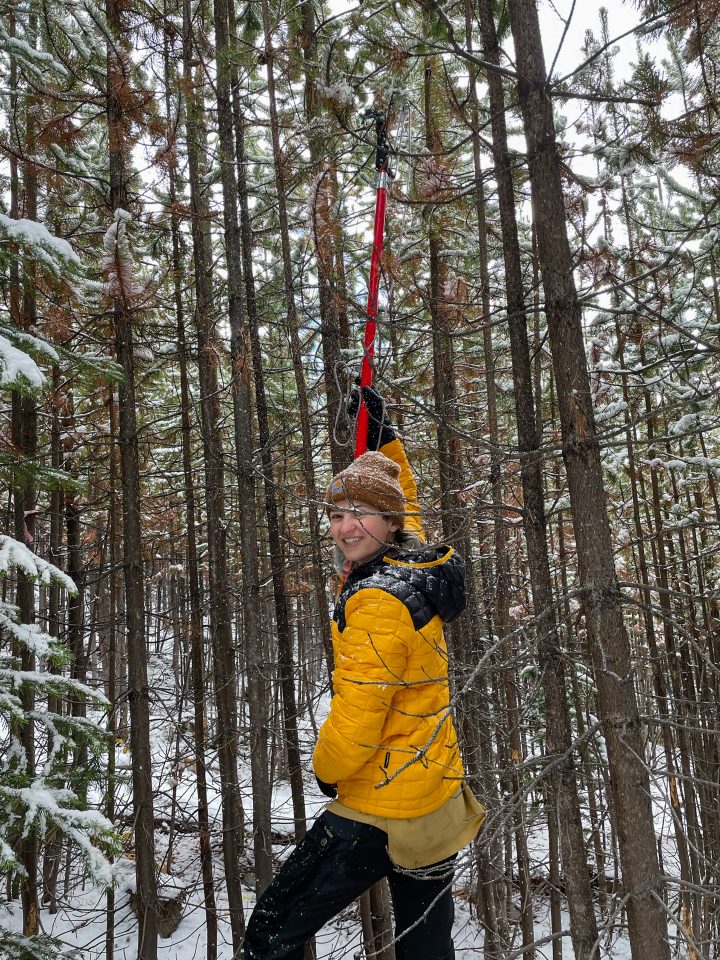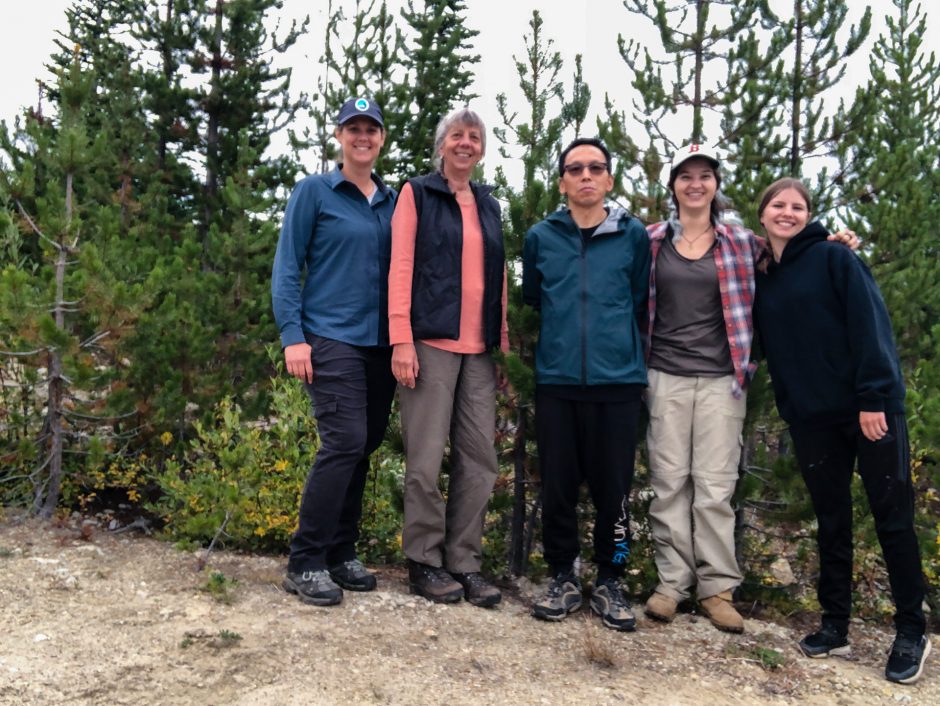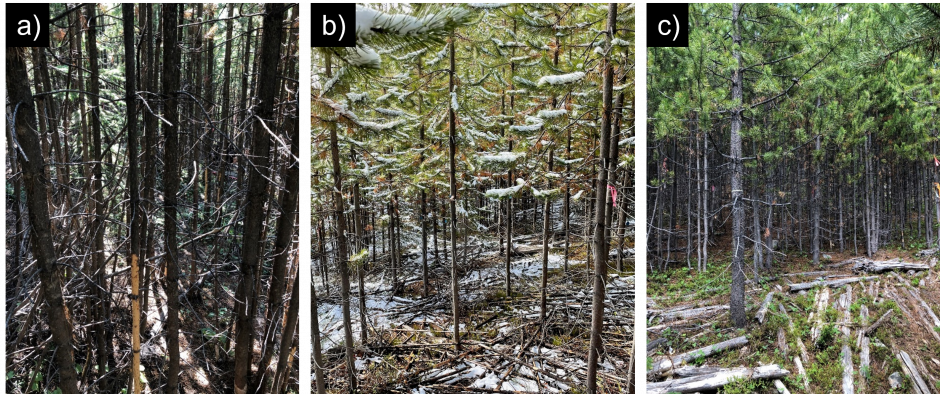Emory Ellis returns for a second field season. They are continuing research with Dr. Wei (UBC-O) looking at the impacts of thinning to decrease tree water use during their regrowth. Specifically, Emory uses stable isotopes to (1) determine where trees are accessing their water in the soil profile and (2) assess whether reducing the number of trees in a young stand could help it better withstand water scarcity. This study will help us better understand the soil-plant-atmosphere water transport mechanisms that drive forest regeneration and water availability and inform forest management practices.

Emory sampling tree branches for isotopic signatures in one of the unthinned stands.

Field tour with Dr. Sheena Spencer (Ministry of Forests), Dr. Rita Winker (Retired Ministry of Forests), Dr. Adam Wei (UBCO Professor), Emory Ellis (UBCO MSc Student), and Fiona Moodie (UBCO Undergrad student).

Example of lodgepole pine stands in (a) the Control (27000 stems/ha), (b) Treatment 1 (4500 stems/ha; center) and (c) Treatment 2 (1100 stems/ha; right) at Upper Penticton Creek watershed.